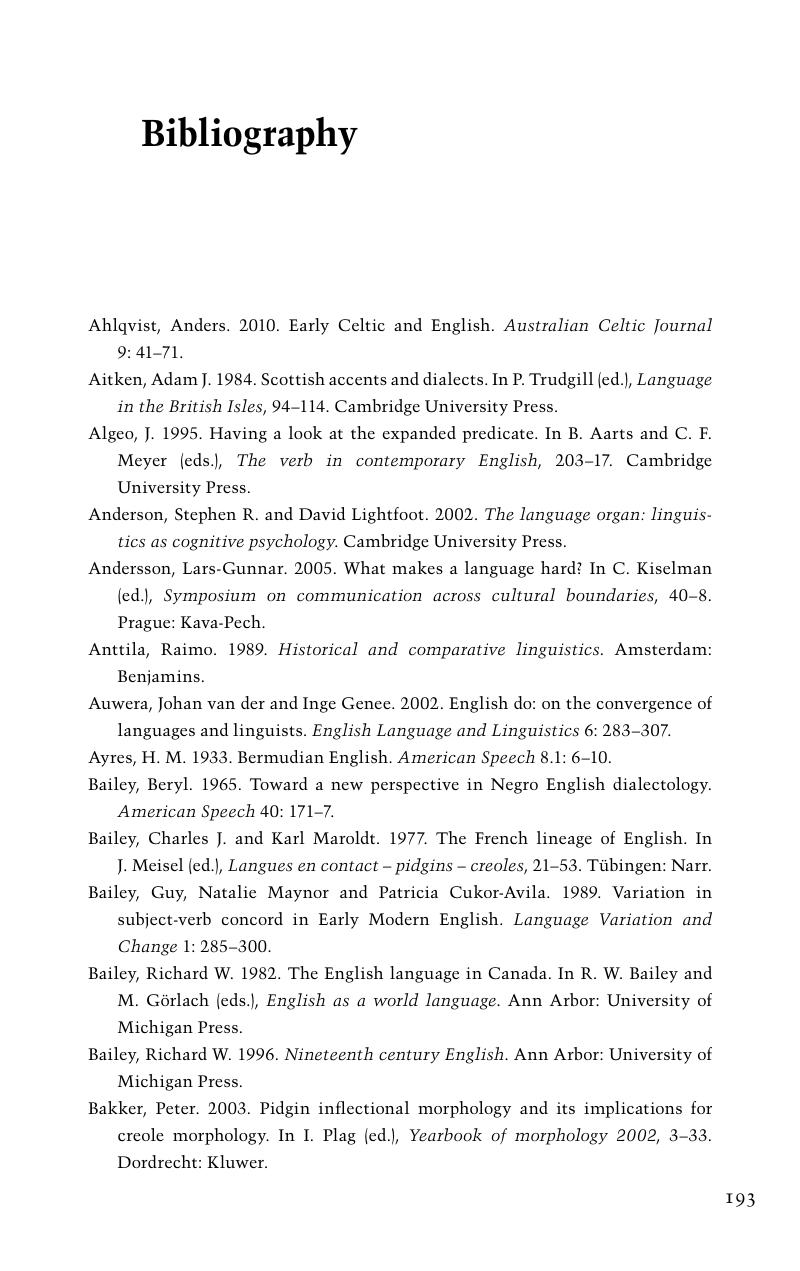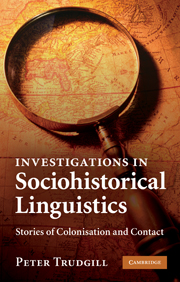Book contents
- Frontmatter
- Contents
- List of maps
- List of tables
- Acknowledgements
- Prologue: Colonisation and contact
- 1 What really happened to Old English?
- 2 East Anglian English and the Spanish Inquisition
- 3 On Anguilla and The Pickwick Papers
- 4 The last Yankee in the Pacific
- 5 An American lack of dynamism
- 6 Colonial lag?
- 7 “The new non-rhotic style”
- 8 What became of all the Scots?
- Epilogue: The critical threshold and interactional synchrony
- Bibliography
- Index
- References
Bibliography
Published online by Cambridge University Press: 02 December 2010
- Frontmatter
- Contents
- List of maps
- List of tables
- Acknowledgements
- Prologue: Colonisation and contact
- 1 What really happened to Old English?
- 2 East Anglian English and the Spanish Inquisition
- 3 On Anguilla and The Pickwick Papers
- 4 The last Yankee in the Pacific
- 5 An American lack of dynamism
- 6 Colonial lag?
- 7 “The new non-rhotic style”
- 8 What became of all the Scots?
- Epilogue: The critical threshold and interactional synchrony
- Bibliography
- Index
- References
Summary

- Type
- Chapter
- Information
- Investigations in Sociohistorical LinguisticsStories of Colonisation and Contact, pp. 193 - 211Publisher: Cambridge University PressPrint publication year: 2010



